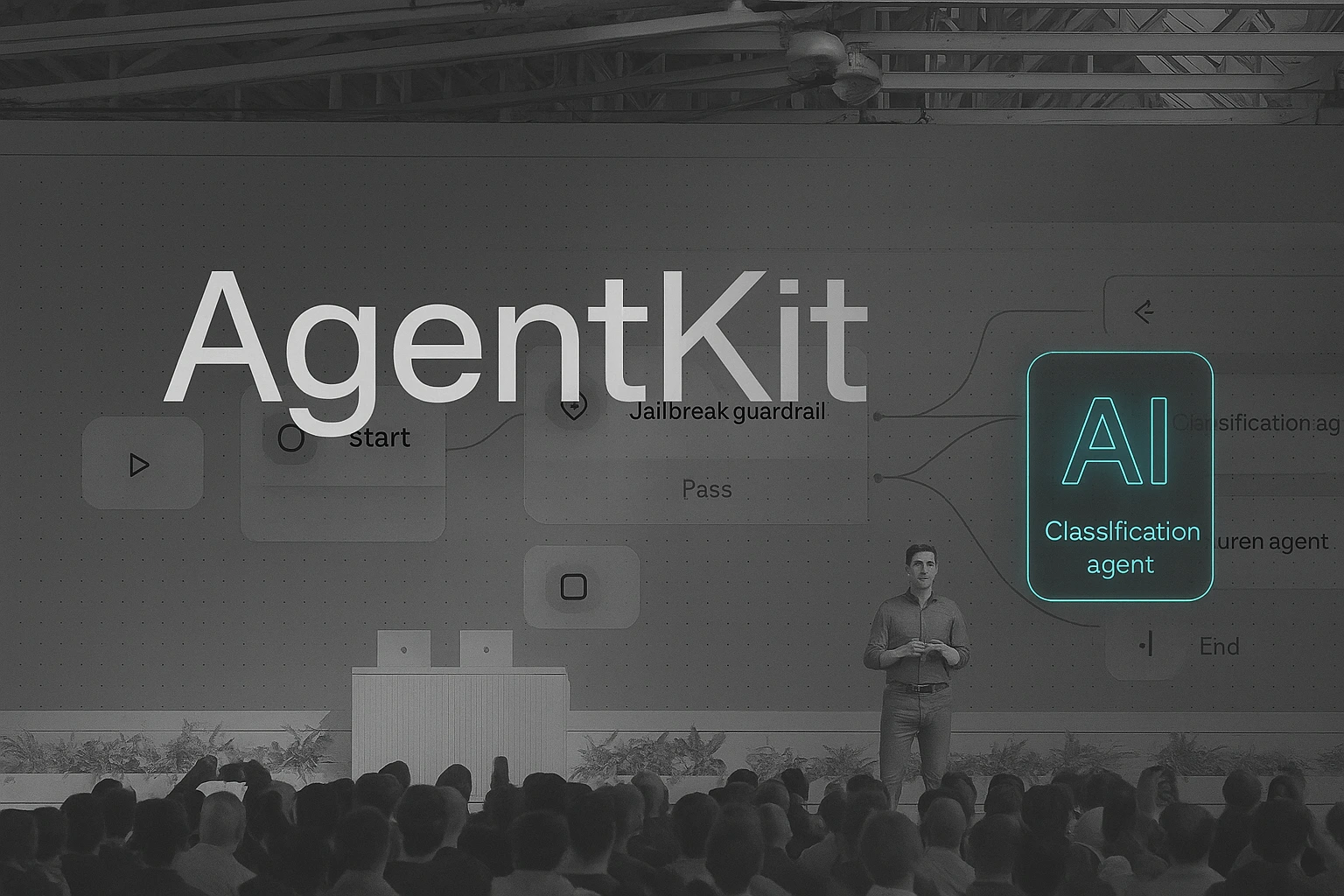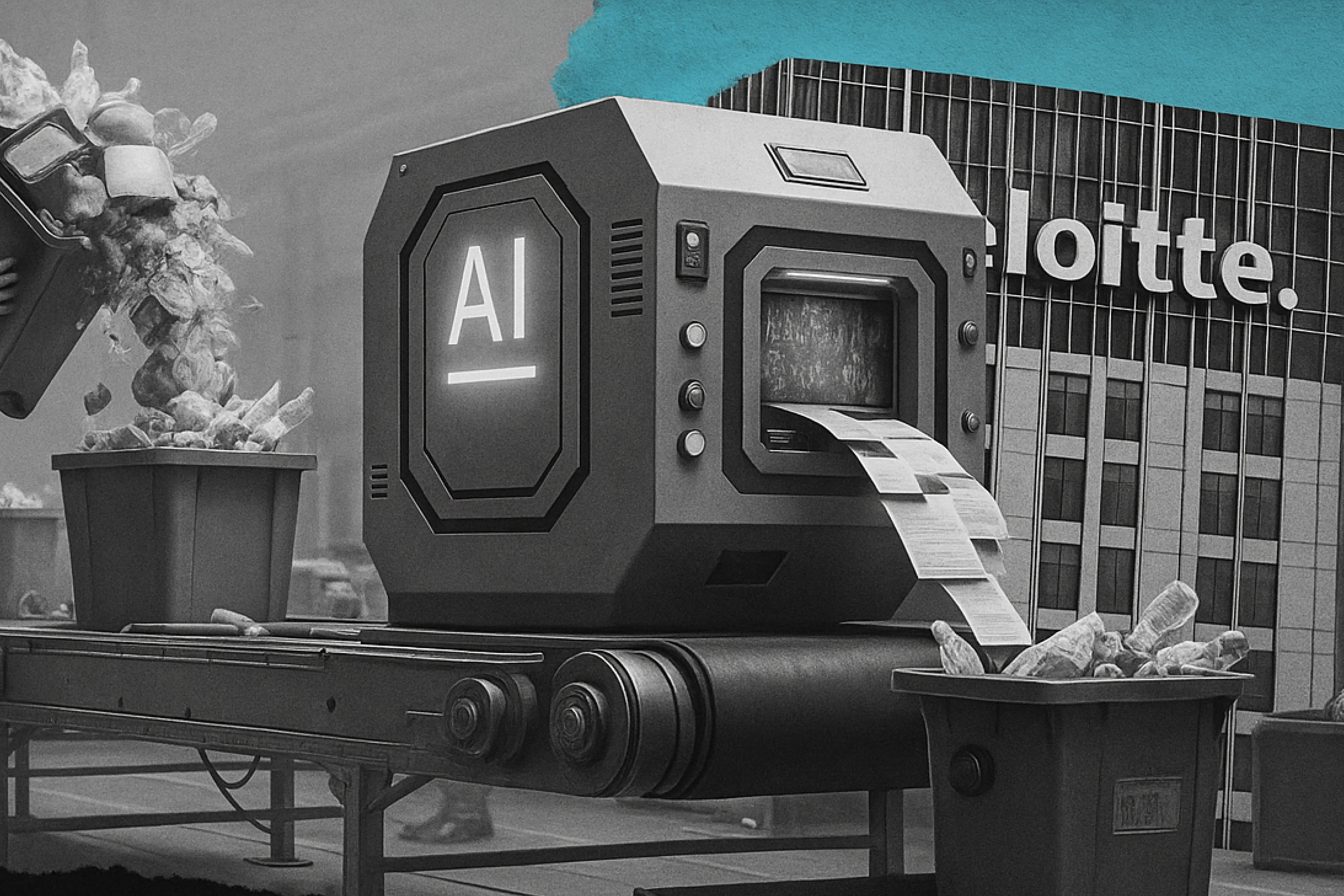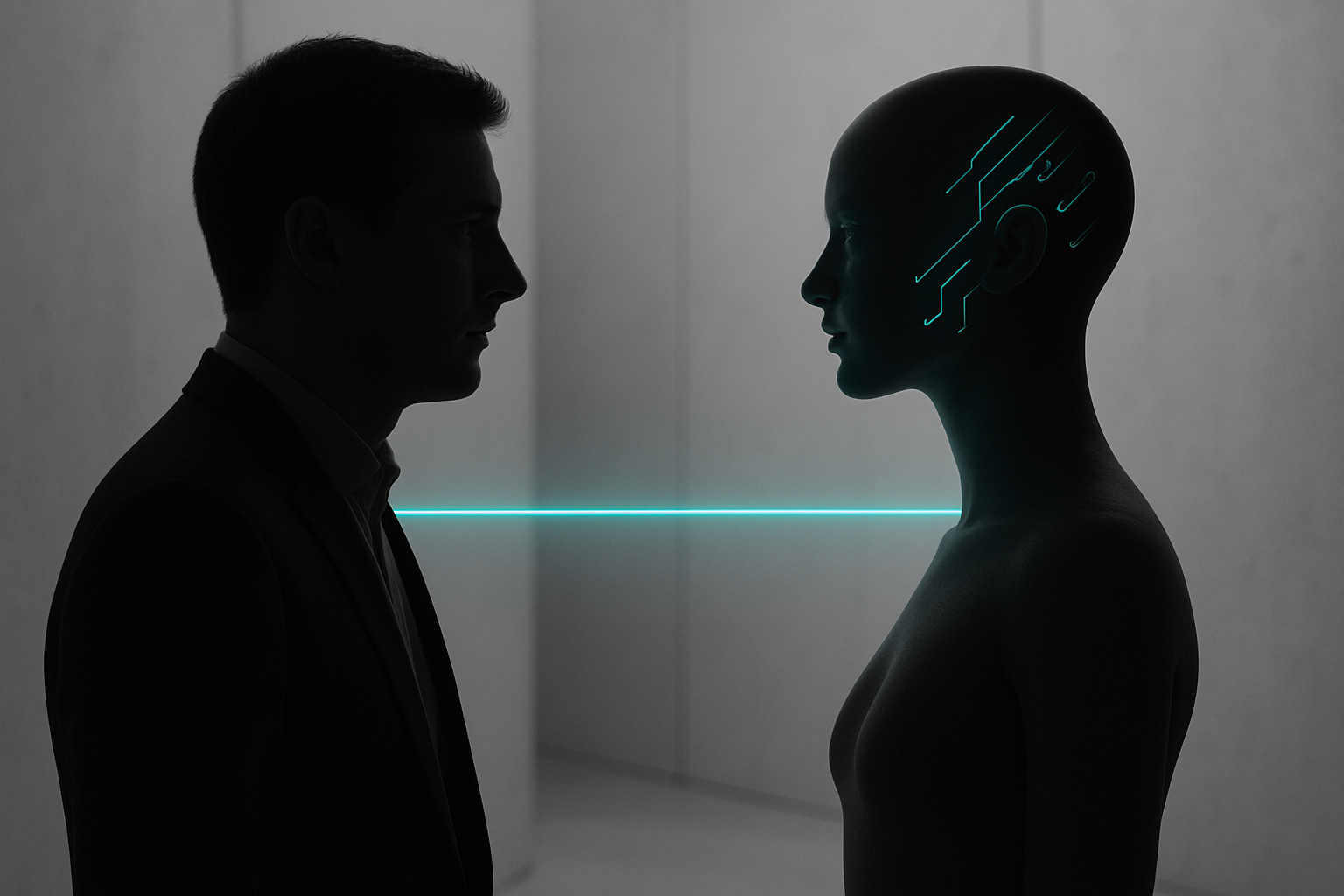
at
Key Takeaways
Hello fellow entrepreneurs, developers, investors, managers, recruiters, different tech wizards with long and overly complicated job titles, and tech enthusiasts in general.
Welcome to the dawn of 2022, the year we finally made it to space travel, Boston Dynamics cyborgs, autonomous driving, electric cars and drones, robotic process automation and artificial intelligence, 8K displays, and cryptocurrencies.

This really reminds me that in the last few years, nothing really changed in terms of understanding what is the role of a User Experience designer inside a company.
You're not just a designer anymore. Look around, above and beyond
A User Experience Designer is one of the most misunderstood jobs even in 2021. I assume that some of the UX designers themselves have no clear understanding of what they should focus on when designing a product. And I have an idea about why this continues to happen.
We have evolved from graphic designers to web designers, from UI designers to UX designers, from customer experience designers to product designers, and so on. Along with our titles, the medium has changed, the tools, the frameworks, the users, the screens, the culture, the technologies, the rules, and laws have changed, basically, the whole world changed around us.

Over the last 13 years, I’ve had a complicated relationship with design. This means that I have evolved somehow naturally from different kinds of mediums, environments, or sources of gathering information and insights. The truth is, that regardless of how many designer ‘titles’ I owned on the business cards from the companies I have worked for, one thing came into my mind in the last months. Nowadays, we are not just designers anymore.
Back in the day, being a designer implied delivering outstanding designs for an audience defined by other members of your team. Generally speaking, you were stuck within a well-defined brief from a Strategy Director, Head of Account Management, and so on.
Nowadays, your visual skills are not very important anymore.
It is about being spot on about calibrating the vision of a product or service with the right audience through your work.
Is it a plane, is it a hat? What does a designer actually stand for?
Of course, there are so many bombastic or rather vague definitions of this job that it is almost impossible to comply with everyone's point of view, of course. So, this is a simple, yet straightforward and complete definition that I totally agree with.
Let's simplify this job title to its core and assume we are just designers.
The Cambridge definition of a designer:
‘A person who imagines how something could be made and draws plans for it’
Now, I am doing my best not to let myself be biased by philosophical interpretations, as the matter is abstract and needs further analysis, but this article should be interpreted as a ‘design thinking exercise’ that can be adapted further to many other topics as well, of course.
Well, let me break this definition into two distinct parts:
A person who imagines how something could be made
A person drawing plans for his imagined something
Within my previous experience, I have found that there are two types of designers: the ones that have great ideas, insights and the ones who implement them. Of course, the best ones are at the intersection of a Venn diagram containing both profiles right in the middle.
Imagine the world. This is your true mission
When imagining things, we should always keep in mind that the world of Product Design and User Experience has clear boundaries. It is not a no man's land in terms of what you can do to solve a problem. So, the imagination phase should reuse and re-polish some stable and simple solutions, already confirmed to work and certified by the users.
Now, this is an important phase, because it sets the direction of your actual implementation when you will need to draw and prototype, write specifications and test or analyze your assumptions and statements. In UX this phase is also known as the “Discovery phase” if your team has a Lean approach, in other teams, this phase can also be known as the “Exploration phase” and some UX designers are really good at this phase, and some of them don’t.

To be honest, the imagination phase should always be approached with no visual implications in terms of design. Actually, you don't need any tools, besides your pen, and sketchbook. Keep in mind that this is an important part of testing and qualifying your hypothesis with your users.
Now, User Testing and User Research have evolved over the years into specific jobs and need a lot of Psychology and Anthropology background in order to be a helpful part of your project.
Yet, as a User Experience Designer, you should always pay attention and participate in the User Interview, User Testing sessions, and set your heat maps accordingly.
You are the juggler on the edge of facts, own hunches, and users’ biases
But, over the years I have witnessed a lot of forced and false conclusions, misinterpretations, and biased assumptions, so in order to reduce the impact of the negative effect of being wrong about your users, always remember these simple rules of thumb:
- Never rely 100% on your user’s responses. In many situations, they have no idea what they expect and want until they see it.
- Don't expect to have all the answers from your User Research. Try to use the research to only validate your theories and hypothesis. Use the Assumption map method instead to incrementally validate your needs.
- Use cognitive process tasks when interviewing and testing with the users. Always link your questions and user needs around perception, attention, learning, memorizing, and language.
- Use archetypes instead of personas. Use behavioral patterns instead of specific action profiles and characteristics. Rely on heuristic analysis in this phase, you won’t nail down your envisions at this point.
- Be creative with the missing parts, and always fill in the gaps. Try to complete the dashed lines within the unanswered sentences from your users. Those who answer and fill correctly the missing parts, and will get the most out of their work.
Plan a dream. Draw a vision. Create a reality
This part starts when most of your assumptions are confirmed and some clear user stories emerged from your previous work.
When designing a new feature or imagining a new complex functionality, try to re-use as many modules and widgets as possible from previous pages or sections of your product. Because the final scope of this phase is to generate and evaluate possibilities and new directions, try to innovate within the framework of your solution, don’t bring to the table all the UI functionalities from the internet, and do not overcomplicate the user’s mission to achieve a certain goal.
This is also the ‘move fast’ phase, as it is mandatory to release a functionality as soon as possible nowadays. Remember, that, the more you test and release and get feedback on it, the better. Your product is a living ecosystem and it needs constant changes, updates, and paradigm shifts as it is totally fine to even change your mind now and then if you have a strong User Research foundation.

The functionality and interaction of a product are like a language used by it to talk to its users. This language should use simple and intuitive words, short phrases, and some clear body signs and gestures. Oblivious, intuitive, simple, and natural gestures when interacting with a screen. Always keep in mind to use the right elements for the right scope, do not overcomplicate interactions just to justify the complexity.
This is a methodical phase, and things are pretty clear in terms of what you should develop. The unclear part is how you should make it, what it will look like, how it would be to interact with it, how long it will take, how easy it will be, would it be the same experience for most of your users, and so on.
It is hard to touch all the aspects of the work of a user experience designer, but in this phase, it is really important if you develop a whole new product from scratch or you just develop some functionalities on an existing product, with an existing design system or UI kit and a branded user interface.
Get into your pocket the design thinking approach and a useful checklist
In both stages, I would use a clear methodology and design thinking approach. Because I think it has a vast application field and it summarizes the main behavioral patterns needed for most of our work as user experience designers, I would recommend the Yu-Kai Chou Gamification and Behavioural Design approach. Use the Octalysis framework as it marks the basic human needs and patterns so important for our work.

The most important painkiller that I can provide in this matter is that over 90% of all SaaS products have a similar structure and architecture. The core of those products is the one that defines the scope of it, that 10% that is custom for that industry, that operation or output. The rest of the product consists of Authentication flows My Account, Reports, Analytics, Admin Settings.
All in all, I have a list of recommendations for this “plan drawing” stage:
- Re-use widgets and modules from other pages if the interaction and structure are similar. Do not overcomplicate - this is meant to be simple.
- Rely on and develop a design system first. Calibrate it to the purpose of the product, scale it accordingly and try to respect it as much as possible, but do not over evangelize it all the time. Be flexible and open to adapting your work to the reality of budgets, team limitations, and paradigm shifts.
- Research is king in all aspects of your work. Try to capture similar products, similar goals, audiences, and markets, and take a look at your competitors.
- Develop with the main user archetypes in mind. You won't design something for everybody, that's for sure. Instead, create the perfect solution for your desired user and help others to adapt and follow.
- Stop wasting time on pixel-perfect designs. It is illogical and doesn't help anyone. It is time-consuming and especially in the initial phases when going to market speed is crucial, it is a time-wasting mechanism without any real value whatsoever.
- Work closely with the development team, the design handover should be a natural language for the members of your team. Use logical rules, name your files accordingly, pay attention to the design system and write specifications. Yes, as a user experience designer you must write UX technical specifications.
- Use logical reasoning design principles*. This means that every design decision has 2 reasons behind it (one that is emotional and one that is rational).
*For instance, this method applies in sizes, colors, grids, gutters, baselines, typeface sizes, and styles, etc. If you must use 2 widget sizes, you can adjust the relationship between them using logical reasoning (100% the most important one, and 50% of its surface for the other).
This simple principle then must be followed in other matters as font sizes (H1 64pt, H2 32pt, Body 16pt) or Baseline 10px with 20px gutter sizes etc. Or just use Fibonacci sentences instead as an alternative. These are just examples, not common specs. The main goal is to create a subliminal common language based on logical decisions and not only visual reasons. This way all the teams involved can predict and adapt their work using the right decisions and not only specs or design limitations.
- Use Design Sprints to develop functional streams of UI elements in order to improve design estimations and delivery times when working Agile. This way you can develop a functional design system filled with working code inside modules and widgets and development and design time will reduce considerably.
Make the best out of your last pawn. And move forward
In conclusion, the user experience designer plays an important role within your team. It can reduce costs, boost productivity and enlighten your team. Ideally, it will catalyze the collaboration between product owners/managers and the development team. It can translate technical blockers and estimations for the
The management team and the investors can explain and describe the motivations and goals of your product in the market with clarity and avoiding technical jargon.
It is crucial for your understanding of the clients, the users, the audiences, and the archetypes of your clients. It adapts, adjusts, and changes your product, turning it into a living, organic, and shape-shifting mechanism, able to adapt to the times and trends, changes of clients and users' values and culture.
So, please, understand that 2022 is a great year for technology. And, that is because technology is not about numbers anymore. And the approach is placing the user in the center of our products. It is about being as human as possible, and that requires understanding ourselves better in order to use technology as second nature of our own.
You too want to simplify your customers' experience, create a design that matters, and set a product successfully on the market?
Andrada Farcaș and Adrian Miclăuș have joined their forces to create a design whitepaper to help individuals from all kinds of backgrounds to simplify their customers' experience, create a design that matters, and set a product successfully on the market. It’s called “Unleash your UX/UI design superpowers - Your essential handbook for generating the design that matters” and you can check it out here. It will cost you less to read it than it will if not.
Download the paper to learn more about UX/UI Design here.
Contributors
Speakers
Guest
Host
Immerse yourself in a world of inspiration and innovation – be part of the action at our upcoming event

Download
the full guide
Let’s build
your next digital product.
Subscribe to our newsletter
YOU MIGHT ALSO BE INTERESTED IN
YOU MIGHT ALSO BE INTERESTED IN




















